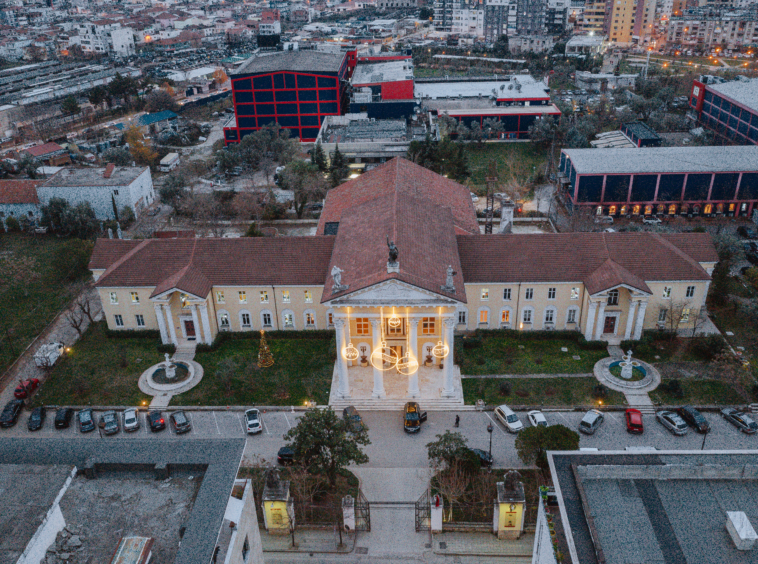Kinostudio
Details
Updated on December 30, 2024 at 8:06 amInformation
- Author: Soviet Architects; K. Miho
- Year Built: 1950–1952
Description
The Neoclassical Film Studio Complex: “Shqipëria e Re”
Built between 1950 and 1952, this neoclassical architectural complex represents a fusion of Albanian craftsmanship and the design sensibilities of Soviet architects. The “Shqipëria e Re” Film Studio, established in 1952, became the epicenter of Albanian cinematic production, symbolizing a cultural milestone during Albania’s alliance with the Soviet Union.
Architectural Composition
The building’s symmetrical layout and classical design elements exude a sense of calmness and grandeur. The central portico, prominently aligned along the axis of symmetry, serves as the focal point, resembling the entrance of a Greek temple. Flanked by Corinthian columns, it underscores the monumental character of the structure.
The plan is cross-shaped, with an inner dome at the intersection of the wings. This dome features frescoes adorned with iconographic motifs, creating a visual and thematic connection to religious and historical artistry.
Symbolic Elements
Despite the communist regime’s aversion to religious influences, the building incorporates numerous religiously inspired architectural features:
- Greek Temple-like Portico: The design borrows heavily from ancient Greek temples, evoking classical spirituality and grandeur.
- Corinthian Columns: These ornate columns contribute to the neoclassical aesthetic, adding an air of sophistication.
- Liturgical Motifs: Two liturgical objects flank the main entrance, further enhancing the spiritual undertones of the complex.
- Medallions and Fountains: Decorative medallions and fountains with triple-shell designs enrich the building’s iconography.
The sole explicitly socialist element is a figure of a woman, designed as an acroterion, holding a red star—a prominent emblem of communist ideology. This paradoxical coexistence of religious symbols and socialist iconography reflects the cultural and political complexity of the time.
Cultural and Historical Significance
The studio was constructed during Albania’s alliance with the Soviet Union, a period characterized by the importation of Soviet architectural and cultural influences. The building’s design, however, reveals a striking paradox: while the communist regime aimed to suppress religious and classical heritage, these symbols were prominently included in the design. This dichotomy underscores the tensions between ideological purity and artistic traditions.
As the hub of Albanian film production, “Shqipëria e Re” played a critical role in fostering a national cinematic identity. Its neoclassical architecture, marked by its monumental and symbolic character, continues to stand as a testament to a transformative era in Albania’s cultural history.


